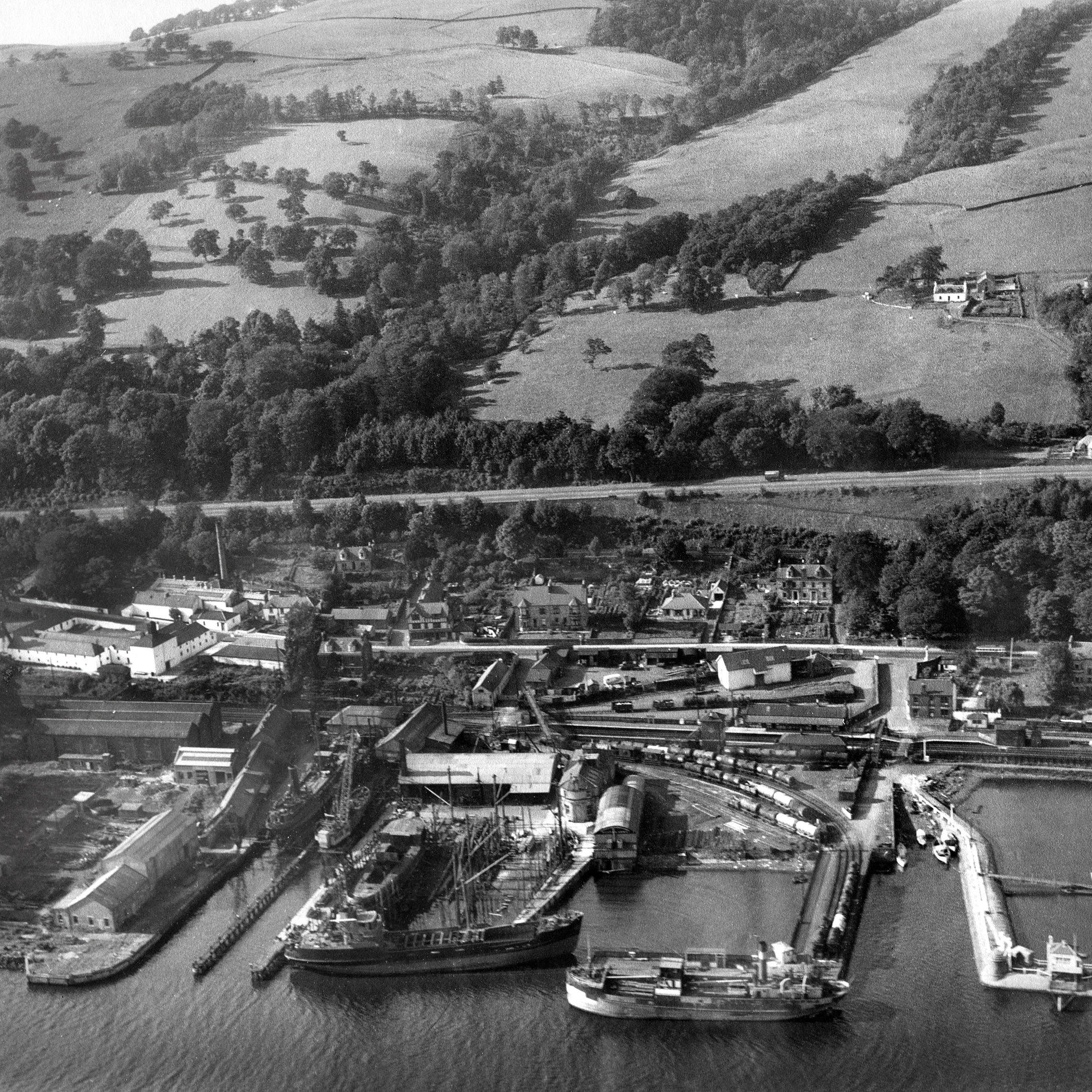Littlemill: a tale of a ghost distillery
Author: Issariya Morgan

Scotland is haunted by ghost distilleries – places that once produced great whiskies, leaving only a limited number of casks behind. But within these casks lie some truly special liquids. This autumn, we’re shining a light on the story of Littlemill distillery, which closed its doors for the last time in 1994. Its remaining casks have been blended into two extraordinary collections, offering a unique taste of the past.
Not so far from Glasgow, where the River Clyde opens its mouth a little wider to the estuary, once stood the buildings of Littlemill Distillery. Old photographs show a cluster of low, white-washed buildings with black slated roofs, the surface of the walls streaked with age; buildings suffused with an air of abandonment.
These photos are all we have of them now. Production stopped in 1994, the distillery was dismantled in 1997, and a fire destroyed the buildings in 2004. Today, a housing development stands on the site. But I wonder, as you are drifting off to sleep, if you can still hear the roll of the barrels, the clatter of tools against the copper pot stills, the thrum of industry. If you can still smell the deep, fruity stench of the brewing barley; if you can taste it in the air.
This is one of Scotland’s “ghost distilleries”. Its story dates back to 1772, making it Scotland’s oldest licensed site. The history here is a familiar one in Scotland, marked by closures and reopenings, changing hands throughout the centuries. But all activity would eventually grind to a halt in the 1990s, its fate later secured by the fire.
Whisky heritage is soaked into the bones of the area – that stretch from Glasgow to Campbeltown, along the banks of the Clyde. During the 1800s, Glasgow was considered the “second city of the British Empire”, a hub of industry and trade. Blooming around it, the West of Scotland was the heart of Scotch whisky distilling. But as one century gave way to another, and the sun began setting on a crumbling empire, that industry moved north, into the Highlands and up to Speyside. In its wake, it left a landscape haunted by ghost distilleries, a trail of shelled-out buildings hinting at an industrious past.
All that remains of Littlemill’s great legacy are archival records and casks. The last of these casks, acquired in 1994, now sit in the warehouses of Loch Lomond Distillery. They are precious things, the whisky still alive and breathing in the wood. And now, they’re safely in the hands of Master Blender Michael Henry, who has been making whisky with Loch Lomond Distillery for the last 17 years.
It must feel like an immense responsibility to work with the last remaining casks of a distillery that will never return. “There’s a real mix of emotions,” says Michael, over a video call. “There’s the romance of working with a ghost distillery – a sense that you’re part of that history – so there’s a kind of sadness that that history has come to an end. But it’s also a celebration. We’re getting people to know about Littlemill, telling its story, sharing its liquid.”
Working with these remaining Littlemill casks, Michael has crafted two new collections: the Cask Reflections Series and the Vanguards Collection. These casks are handled with immense delicacy and skill. Such a job requires an intimate knowledge of each cask, how the liquid is showing at any given time, knowing where the balance lies between the spirit character and the wood influence. How each piece fits within the wider puzzle, like a fragment of melody in a broader symphony.
After all, these liquids are time portals, some of them made from whisky that was distilled half a century ago. Extraordinarily rare, they capture a moment that will never return. Knowing this, it must feel strange to drink such a thing. But Michael is unequivocal.
“The thing about any whisky, no matter its history, is the fact that it’s made for drinking. It’s made to be tasted and enjoyed. That’s the most respectful thing we can do – the way we can pay homage to the distillers.”
Three tasting notes
Cask Reflections Release No.1 is made from a careful selection of 33-year-old casks, finished for four months in Japanese Mizunara oak. Mizunara is a floral, fruity and perfumed wood that is often used for furniture-making, with a porous quality that imparts flavour quite quickly, and requires a great deal of care to manage successfully.
But the resulting whisky is something special. It shows a fragrant sandalwood character, with a delicate weave of caramel, white flowers, green apple and freshly cut grass. Sweet, varnished wood comes through on the palate, with a touch of cloves, warm vanilla and a lift of citrus.
The Vanguards Collection – Chapter 1: Robert Muir is made from liquid that was distilled on 11th October 1977, telling a story of four decades spent quietly maturing in American oak. It has since been re-casked and finished in Oloroso Sherry hogsheads, followed by refill Bourbon.
Wonderfully rich, it displays notes of salted toffee, chocolate, orange blossom and hazelnut, with a malty cereal character woven through, alongside juicy hints of nectarine and apricot. A chewy raisin-like note speaks to its time in Oloroso wood.
The Vanguards Collection – Chapter 2: Jane Macgregor is named after Scotland’s first female licensee; her tenure was recorded at Littlemill in 1823.
This beautiful expression is made from 47-year-old liquid, showing a clean, surprisingly delicate palate with a light, fresh body. On the palate, it offers delicate fruits such as apple, white pear and a hint of white grape, with an almost grappa-like quality.


